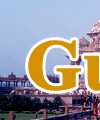 |
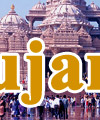 |
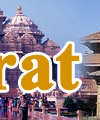 |
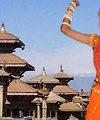 |
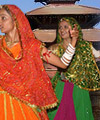 |
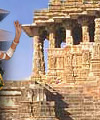 |
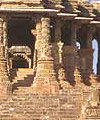 |
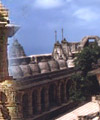 |
|
|
Fairs And Festival FairsThe fairs in Gujarat are generally associated with some religious festival. Most of the fairs in Gujarat are held on riversides (River Narmada in Baroda and Broach districts) or near confluences of rivers, sacred ponds and reservoirs or on hillsides, sea shores or in pilgrim centres, either in Chaitra ( March/ April) or Kartika months on full moon days. Fairs on the full moon days in the month of Chaitra are held at Chandod and at Karnali in Baroda district and at Shuklatirth in Broach district in month of Kartika. The fair held on the full moon day of the Kartika at the confluence of seven rivers near the village Vautha, in the Ahmedabad district is the most colourful one when people from far and near collect and have a holy dip in the confluence. The fair at Shamlaji in the Sabarkantha district is a great occasion of mirth where Adivasis in thousands gather. The Tarnetar fair in the village of Tarnetar in Surendranagar district celebrated in the honour of Lord Shiva on the 4th, 5th and 6th days of the bright half of the month of Bhadrapada ( August/ September) is also a similar joyous occasion. Muslims have also their fairs, held at their sacred places. Madhavrai Fair at Madhavpur near Porbandar is held to celebrate the marriage by elopement of Lord Krishna and Rukmini, on the 9th day of the bright half of the month of Chaitra (March/ April). Ambaji Fair dedicated to Amba, Mother Goddess is held in Banaskantha district. A big annual fair during Janmashtami, the birthday of Lord Krishna is celebrated at Dwaraka and Dakor with great enthusiasm. The Urs at Shah Alam Roza in Ahmedabad and at Miran Datar in the Mehsana district are most important fairs for them. Festivals During the entire period between June and October, when most of the countryside is engaged in agriculture, the festivals are mostly days of austerity, Penance and fasting. The period includes the Gauri Puja, the Janmashtami, the Nag Panchami the Paryushan and the Ganesha Chaturthi. Women mostly celebrate many of Gujarat's festivals. No festival except the Balev, when Brahmins change their sacred threads, is exclusive to any particular community or section. Even on the Balev, sisters tie Rakhi on their brother's wrist wishing them happy life. Gujarat also celebrates festivals like the Ramnavami, the Sivaratri and the Mahavir Jayanyti. Young observe Gauri puja, unmarried girls, who fast and pray for getting 'suitable husbands'. Married women observe the Savitri Vrata. They worship the banyan tree and offer their thanks-giving for their happy married life. Muslims in Gujarat have their festivals, such as the Moharrum, the prophet's day and the Id days. Similarly, Parsis celebrate their New Year day Pateti. The Christians observe the Christmas, the New Year day and Easter. Navratri Another interesting feature of Navratri is the garba, a circular dance performed by women around an earthenware pot called a garbo, which is filled with water. As the dancers whirl around the pot, a singer and a drummer provide the musical accompaniment. The participants clap in a steady rhythm. Another dance which is also a feature of Navratri is the dandia-ras or 'stick' dance, in which men and women join the dance circle, holding small polished sticks or dandis. As they whirl to the intoxicating rhythm of the dance, men and women strike the dandias together, adding to the joyous atmosphere. So popular are the garba and the dandia-ras that competitions are held to assess the quality of the dancing. Prizes are given to those judged to be the best. The festival ends on the Dussera day, when artisans worship their instruments, agriculturists their ploughs, warriors their weapons and students their books. The Navaratri festival is closely followed by the Sharad Purnima, the full moon night in the Asvina month. On this day, people partake of Prasad rice and milk under the moon light. The people of Surat make merry on the Tapi bank. Gujarat has two temples dedicated to two most popular mother goddesses of Gujarat, Amba Mata and Becharji Mata. On Kartika and Chaitra Purnima days and during the Navaratri days, people visit these temples and enjoy Gujarati's typical folk drama, the Bhavai.
Diwali The full moon day of the Kartika month, with its preceding eleventh
(Ekadashi) day is called the Dev-Diwali. On this day, the marriage
of the Tulsi plant with the Shaligram, symbolising Lord Vishnu,
is celebrated in every Hindu home in Gujarat. It also marks the
termination of the Chaturmans (fast), observance of four months
of rainy season, during which Hindus, mostly women, miss a meal
on every Ekadashi day and the ascetics do not move about. Kites are flown all over Gujarat. Ahmedabad and Baroda become cities of Kite-flyers. Kite flying starts at dawn and continues throughout the day. Friends, neighbors and total strangers battle one another for supremacy and cries of triumph rend the air when someone cuts the line of a rival. A variety of kites is seen and the connoisseur can choose precisely what he wants. Even the lines with which the kites are flown are specially prepared by the experts before the great day. All other work is forgotten and care is thrown to the wind. Holi Modhera Dance Festival So successful was the presentation that a decision was taken to make it an annual event. The dance festival is scheduled to be held during the third week of January every year, after the festival of Uttrayan. Janmashtami at Dwarka Janmashtami is the birthday of Shri Krishna, and is celebrated
with great splendour. Rows of lights are lit everywhere, kirtans
and bhajans are sung, sermons are delivered and Krishna is worshipped
in his infant form.
|
||||||||||||||||
|
||||||||||||||||
|
||||||||||||||||